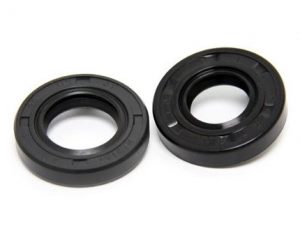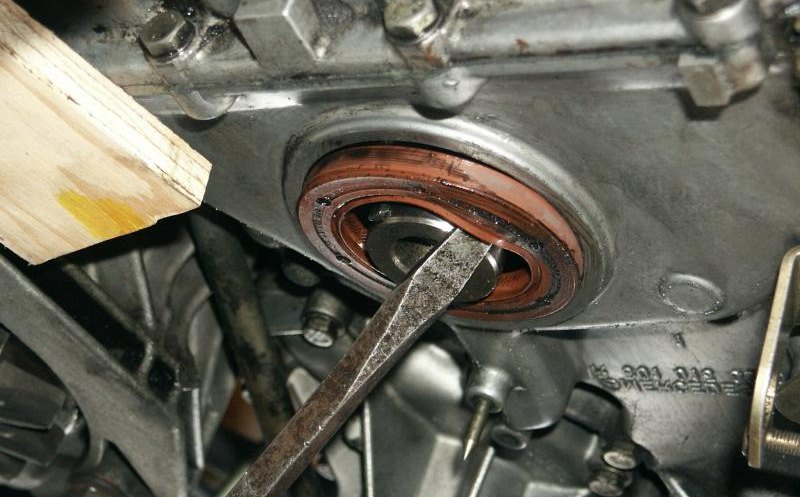What’s a Crankshaft Seal and Why Should You Care?

Okay, picture this: you’re down at the BP on Te Rapa Road, and someone’s asking about this weird puddle under their Mazda Axela. Or maybe you drive a Suzuki Swift or a Volkswagen Passat, and you notice a funny smell after crawling through the evening traffic from Tamahere. Quite often, the culprit is the crankshaft seal. It’s one of those important little bits you never see, but trust me, you want it to be doing its job.
The crankshaft is the bit in your engine that takes the up and down movement from your pistons and turns it into that smooth spin that gets your wheels moving—same for an old Honda Accord or a new Kia Niro hybrid. Now, if you didn’t have something stopping the oil from leaking out at each end of the crankshaft, you’d have oil everywhere. That’s where crankshaft seals come in—one at the front, one at the rear—keeping all that oil inside and rubbish out. It even helps your engine keep the air-fuel mix spot on. If you want to get into the nuts and bolts, check this out: How does the crankshaft work?
Honestly, around Hamilton and the wider Waikato, with all the stop-start driving on Peachgrove Road or bouncing over potholes in Nawton, those little seals work hard. Hot, dry summers and chilly, foggy mornings out Morrinsville way don’t make life any easier for them, either. They just wear out over time—no matter if you’re driving a Toyota Corolla, an Audi A4, or a Nissan Tiida.
What Happens When a Crankshaft Seal Starts to Go?
You don’t need to be a car buff to tell when something’s up. Here are some classic signs we see from folks in town—from students heading out to Rototuna, to tradies coming in from Cambridge or Matangi:
Oil leaks: See a few drops or even a decent puddle under your car? Check especially where the engine meets the gearbox or under the front pulley. Quite common in older Subarus and even the occasional Peugeot. Long park-up at Westfield Chartwell, then you notice the tell-tale marks? Classic crankshaft seal issue.
Oil warning light: That orange light pops up on the dash—don’t just cross your fingers and keep driving! Low oil or oil pressure can be serious. If you spot that light, best to swing by before it turns into a tricky (and expensive) fix. We’ve sorted plenty of these, from Hyundai i20s to Mercedes C-Class. Want more advice on that? Jump over here: Oil warning light diagnostics in Hamilton >
Misfires or rough running: Lose a seal and your engine might start misfiring or feeling gutless—especially older Euro stuff, or even some Honda Fits. Air sneaks in, messes with the fuel mix. Not good. Will sometimes even trigger the check engine light.
Engine vibration: Bit rough at idle? Extra shakes, especially on the school run out to Flagstaff? A worn seal can let the crankshaft move around a bit—never a good thing. We see this in all sorts, even the odd Volvo or MG these days.
Overheating and extra wear: No oil? More friction. That’s when bits get hot, wear out faster, and you’re in real bother. Especially if you’re clocking up the k’s heading up SH3 to Te Awamutu or stuck at lights on Anglesea Street.
Tip: If you’re already getting the cambelt replaced (should be every 100,000 km or so), get your mechanic to check or swap the front crankshaft seal as well. Saves you time and money long term.
Crankshaft Seal Repairs and Replacements—Hamilton & Nearby
Noticed any of those signs? Don’t put it off! Leaking seals don’t heal themselves—been there, seen that. Here at Grimmer Motors, our crew sorts crankshaft seal replacements all the time. We get folks in with everything from a Toyota Wish to a Renault Megane needing work. Whether you’re coming from Raglan or Gordonton, we’ll get you sorted quick as, and keep that oil where it’s meant to be. No more drips or mystery warning lights.
For genuine, down-to-earth car service Hamilton drivers trust, give us a bell, pop by for a WOF Hamilton, or just book your spot below. We’ll look after you and your car, no worries.

